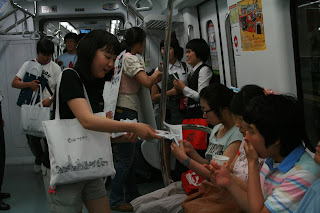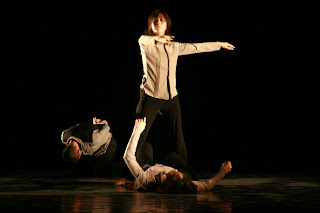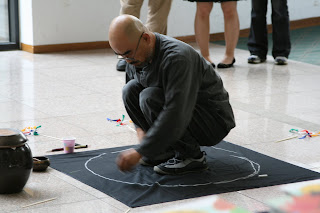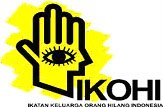.jpg) A. INTRODUCTION
A. INTRODUCTION
Gwangju International Peace Forum is an international forum that aims to strengthen international solidarity between domestic and foreign activists working for democracy, human rights, and peace. Some 150 participants usually join this forum. During the program, the participants will have the opportunity to participate in the official ceremony commemorating the anniversary of the May 18 Gwangju Uprising and pray for the victims souls to rest in peace. The participants will also attend the award-giving ceremony of The Gwangju Prize for Human Rights.
This year, the forum was hosted by The Committee of 28th May Anniversary. The Co-organizers were ARENA, Gwangju Regional Office of NHRC of Korea, Citizens for Decent Housing, and The May 18 Memorial Foundation. The forum was supported by Gwangju Convention and Visitors Bureau, Korea Democracy Foundation, and Cooperation and Aggregate Busan Democratic Movements Association.
The forum was held from May 15 until 18, 2008 at the May 18 Memorial Culture Hall. The objectives of the forum were:1. To spread the spirit of the May 18 democratic uprising and provide a venue for Asian democracy movements to network.
2. Aiming to become a hub-city of democratization movement in Asia, we recognize the need to develop Gwangju International Peace Forum as a platform to engage civil society movements to dialogue on peace, human rights, and democracy.
The following were the 4 programs of the 2008 Gwangju International Peace Forum:
1. The May 18 Memorial Foundation in Conference Room
- Gwangju Network for Democracy Movements in Asia
- Workshop for the Memorial Associations on International Solidarity
- Civil Society Group Workshop on International Solidarity for Asian Human Rights
- Forum on Asia Regional Solidarity : We are facing ‘Asia’
Korean Civil Society Organizations are facing challenges deepening understanding people and culture of Asia. Asia Institute plans to have a dialogue with scolars and activists from Asia which reflect or current situation of Asian studies and divers way of Asian solidarity of civil society.
2. ARENA / The May 18 Memorial Foundation in Audio – visual Room
2008 International Workshop on Human Rights to Peace in Asia : Peace and Right to Resist : Exploring New Dimensions of the Human Rights to Peace in Asia
ARENA the International Workshop on Human Rights to Peace in Asia, aiming at the advancement of the concept and content of the Rights to Peace through in-depth discussions and examinations with nine presenters from all different countries.
3. Gwangju Regional Office of NHRC of Korea in Exhibition Hall
Workshop on the Human Rights Perspective of a Local Autonomous Ordinance
Through “Workshop on the Human Rights Perspective of a Local Autonomous Ordinance”, we want to check over a Local Autonomous Ordinance. The lives of local people have been effected a lot by a Local Autonomous Ordinance more than by a National Law and Ordinance. We hope we can find ways for the local areas have become a Human-Right community through this workshop.
4. Citizens for Decent Housing in Lobby, 3rd Floor
2008 Program of the 2nd ANAH 2008 in Gwangju Korea: For the Asian NPO Leaders’ Networking for the well-being of Asian housing, CiDeH (Citizen for the Decent Housing) established the ANAH (Asian NPO Networking on Adequate Housing) in 2007 with agreement with 9 people from seven different countries during ANAH 2007 session in Korea from Oct 1st through 4th.
This forum expected outcome were:
1. Participants will recognize the 2008 Gwangju International Peace Forum as an international event and platform for civil society movements to network and for Gwangju to be considered as one of Asia’s sacred places of democratization.
2. We aim for Gwangju International Peace Forum to grow and develop as Asia’s World Social Forum for human rights, democracy, and peace for the upcoming 30th Anniversary of the may 18 Gwangju Democratic Uprising in 2010.
B. SUBSTANCE
There were 188 participants from 21 countries. The breakdown as follows:
Korea 121; Taiwan 10; Japan 8; India 7; Thailand 7; Nepal 5; Indonesia 5; Pakistan 3; Cambodia 3; Bangladesh 3; Malaysia 2; Sri Lanka 2; Philippines 2; China 2; Spain 1; Laos 1; Germany 1; Mongolia 1; Burma 1; Vietnam 1; Myanmar 1.
Most of the participants from other country arrived in Gwangju on May 15, 2008. At night, there was a welcoming reception at 6 PM at the Reception Hall. The ceremony was opened by a donation of censored newspaper by Mr. Sin Yong Ho as a Chairman of the Chonnam Mail Newspaper and was given to Mr. Yun Gwang Jang as a Chairman of the May 18 Memorial Foundation. The ceremony took place around 2 hours including dinner. After the dinner, the participants went to their respective hotels.


On May 16, 2008 the forum were started with the opening ceremony at 9.30-10.30 AM at Daedong Hall. Representative from organizations that were involved in hosting gave reception words. On the first day, the workshops started at 10.30-12.00 AM for the first session.






The participants had lunch at 12.00-1.30 PM. For 3 days there were 2 restaurants the participants can choose: Natural Living (Vegetarian) Restaurants and Su Mok Gwan Restaurants (for meat eaters). The second session started at 1.30-5.00 PM. After finished the second workshop, the participants had dinner. At 7-9 PM, the participants must choose one discussion from three choices. The topics were:
1. Solidarity Movements
2. Recent Development in Nepal
3. Update on Relief and Support for Victims of Cyclone Nargis in Burma
The discussions took place for 2 hours. At 9 PM, the participants went back to their hotel.
The second day on May 17, 2008 the participants joined the first workshops from 10-12 AM. They had lunch at 12-1 PM. The second workshop started at 1-5 PM, and after they finished they had dinner.
At 6 PM, the participants with several staff and volunteers had a journey to downtown. They attended the eve event of the 28th Anniversary of the May 18 Democratic Uprising until 10 PM. This event was presented by the Gwangju citizens. Every year they did the event to commemorate and celebrate the May 18 Gwangju Democratic Uprising. There were some workshops and demonstration too and mostly the Gwangju citizens opposed the beef importation (madcow) and other policy of Lee Myung Bak.



In the eve events there were some performances like sing and dance on the program. The stage is in front of the former provincial hall. There were parts where citizens from various sectors and age expressed their feeling about the president’s economic and political policies. Some were even crying. At 10 PM, the participants went to the hotel by bus.


On the last day on May 18, 2008 the participants with several staff and volunteers attended the 28th Commemorative Ceremony of the May 18 Democratic Uprising at the May 18 National Cemetery. The ceremony started at 10-11.30 AM. This year president, Lee Myung Bak, come to grow the location. The security was strict. There were Korean choir and Korean dance presentation. After the ceremony finished, some participants prayed at the altar for the victims of the May 18 Gwangju Democratic Uprising.

Around at 12 PM, the participants had a field trip to the Unju Temple. The journey took around an hour. In the temple, the participants went around the area and some of them had discussion at the restaurant.

We arrived at the May 18 Memorial Culture around at 4.30 PM and then took pictures together. At 5 PM, the Gwangju Prize for Human Rights was started. The winner of the 2008 Gwangju Prize for Human Rights is Muneer A. Malik, a Pakistani lawyer.


The audience were entertained by performances, like singing and dancing. After the ceremony, the participants took pictures with the winner, Muneer A. Malik in Daedong Hall and then had dinner at the Reception Hall. We didn’t have lunch, just some breads so when we had dinner the participants had big appetite. Around 9 PM the participants went back to the hotel. They said goodbye each other.


C. CONCLUSION
It was a big opportunity for me to be involved on the 2008 Gwangju International Peace Forum. I meet and shared with the activist of democracy, human rights, and peace from other countries, especially I had chance working with the volunteers. I am very grateful for this opportunity.
links:
http://www.518.org/
http://www.518solidarity.blogspot.com/




























.jpg)



































































